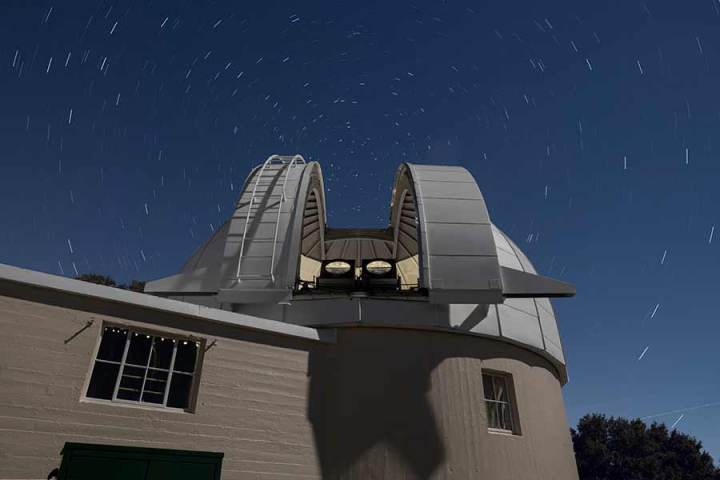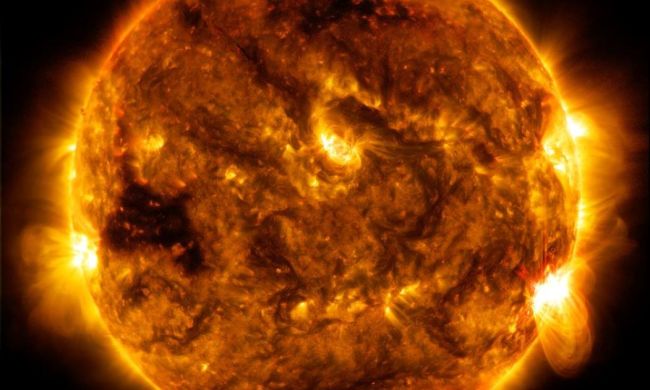
Astronomers have a new tool in the search for extraterrestrial intelligence (SETI) with the installation of two new dedicated SETI telescopes. The pair of telescopes, located in the Lick Observatory near San Jose, California, are the first of hundreds of telescopes planned as part of the PANOSETI, or Pulsed All-sky Near-infrared Optical SETI, project.
The telescopes will search for flashes of light, either in the optical wavelength or in the infrared wavelength, which could be as short as a few nanoseconds. The researchers believe that such flashes could originate from either intelligent life, indicating extraterrestrial communication, or astronomical phenomena similar to fast radio bursts.
By looking at such short time scales that are rarely studied in astronomy, the PANOSETI project may have the chance to discover something unexpected. “When astronomers examine an unexplored parameter space, they usually find something surprising that no one predicted,” Dan Werthimer, chief technologist at UC Berkeley’s SETI Research Center and co-investigator, said in a statement. “PANOSETI could discover new astronomical phenomena or signals from E.T.”
“The goal is to basically look for very brief but powerful signals from an advanced civilization,” Werthimer went on to say. “Because they are so brief, and likely to be rare, we plan to check large areas of the sky for a long period of time.”
When asked what the likelihood was of the project detecting extraterrestrial signals, UC San Diego astronomer Shelley Wright, leader of the PANOSETI project, said, “The short and correct answer is we have no idea on the likelihood of detection. With PANOSETI we will be observing an unexplored phase space for SETI and astronomical observations. Our goal is to make the first dedicated SETI observatory that is capable of observing the entire visible sky all of the time.”
With the new telescopes now installed, the team must now finish the final assembly and testing of the instruments before measurements can begin. Each telescope will image and area of just 10 degrees by 10 degrees, so they will be able to look in-depth at a single area of the sky. Eventually, the project aims to install 80 telescopes each in two locations, which will be able to cover 10,000 square degrees or the entire observable sky.



